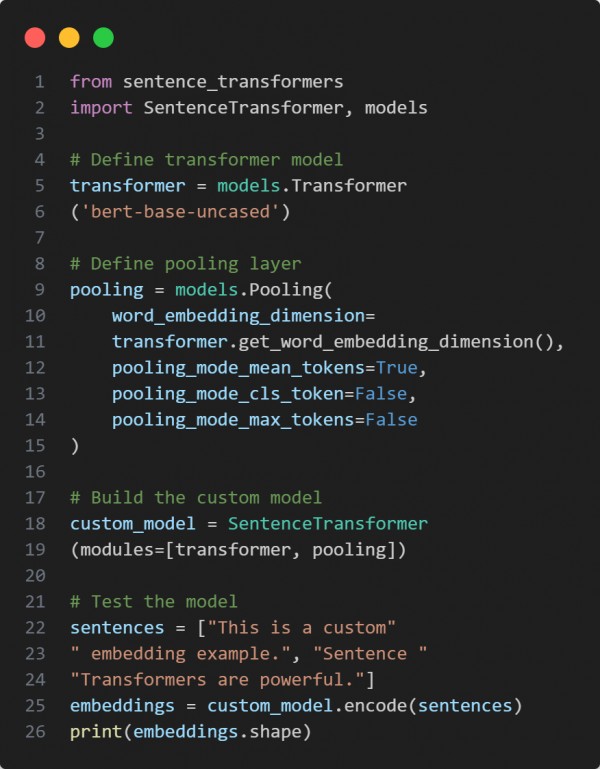You can build a custom embedding model using SentenceTransformers by defining your own transformer backbone and pooling strategy.
Here is the code snippet below:

In the above code we are using the following key points:
-
models.Transformer to load a base transformer like BERT.
-
models.Pooling to define how sentence embeddings are aggregated.
-
SentenceTransformer to combine transformer and pooling into one model.
-
.encode() to generate embeddings for input sentences.
Hence, this approach enables flexible creation of sentence embedding models tailored to specific tasks or datasets.
 REGISTER FOR FREE WEBINAR
X
REGISTER FOR FREE WEBINAR
X
 Thank you for registering
Join Edureka Meetup community for 100+ Free Webinars each month
JOIN MEETUP GROUP
Thank you for registering
Join Edureka Meetup community for 100+ Free Webinars each month
JOIN MEETUP GROUP